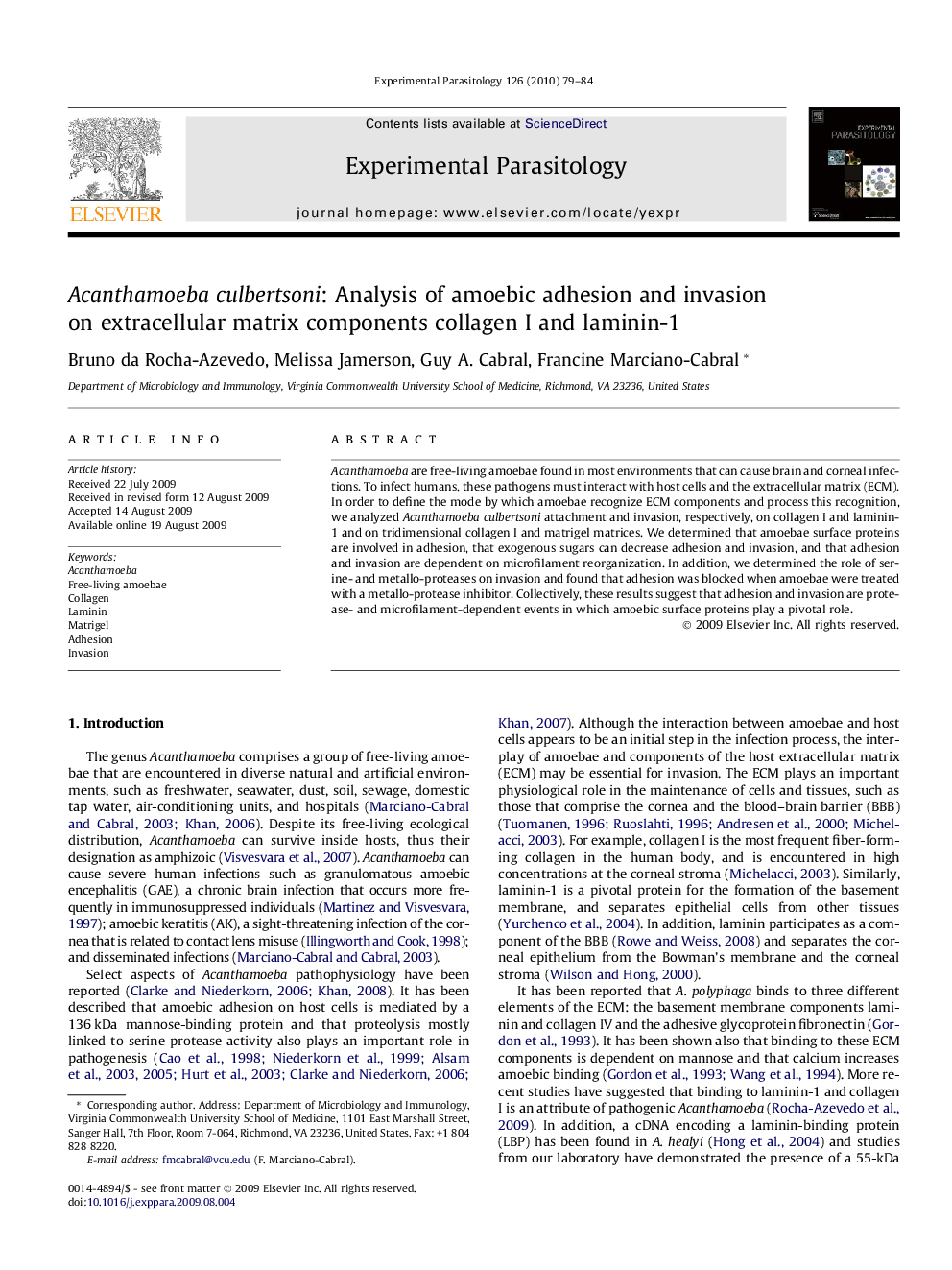| Article ID | Journal | Published Year | Pages | File Type |
|---|---|---|---|---|
| 4371620 | Experimental Parasitology | 2010 | 6 Pages |
Acanthamoeba are free-living amoebae found in most environments that can cause brain and corneal infections. To infect humans, these pathogens must interact with host cells and the extracellular matrix (ECM). In order to define the mode by which amoebae recognize ECM components and process this recognition, we analyzed Acanthamoeba culbertsoni attachment and invasion, respectively, on collagen I and laminin-1 and on tridimensional collagen I and matrigel matrices. We determined that amoebae surface proteins are involved in adhesion, that exogenous sugars can decrease adhesion and invasion, and that adhesion and invasion are dependent on microfilament reorganization. In addition, we determined the role of serine- and metallo-proteases on invasion and found that adhesion was blocked when amoebae were treated with a metallo-protease inhibitor. Collectively, these results suggest that adhesion and invasion are protease- and microfilament-dependent events in which amoebic surface proteins play a pivotal role.
